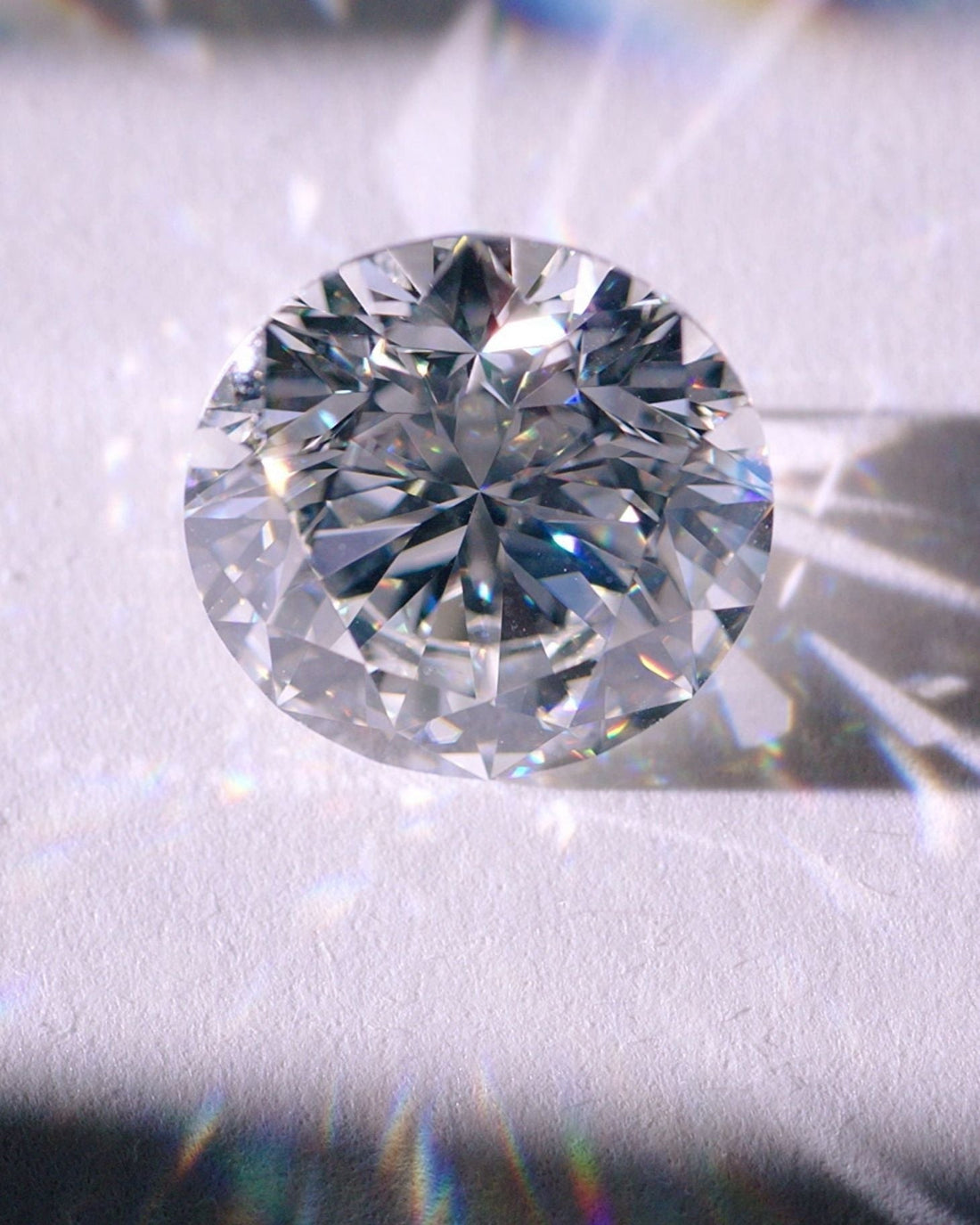Are you in the market for something dazzling?
If you have started browsing the world of diamonds, you’ve probably noticed that shopping for a diamond is very different from shopping for fashion, or the home. The most significant of these differences, is that with diamonds, no two can be exactly alike – and stones that may appear similar, can have vastly different values.
You will find an enormous amount of information online, and each jeweller will present their own interpretation of technical aspects to you, and we hear you, it can be overwhelming.
So, you can avoid feeling frustrated & discouraged by this, our diamond buyer Nic Dracakis has prepared a guide to buying diamonds which will help you understand how stones are graded and price – he even includes some tips on finding the perfect stone to celebrate your special moment.

Let us get started.
Diamond quality and value are graded on four universally agreed attributes which are called the 4 C's.
Cut
Colour
Clarity
Carat
When you start shopping for a diamond, you’ll hear these terms again & again – taking time to listen & learn their meanings, and ask the right questions will help inform your decision & give you the best diamond buying experience.
Firstly, Cut.
Cut describes the shape of a diamond and most importantly, the quality of its precision and workmanship. To put this very simply, the quality of the cut determines a diamond's sparkle. Precise, even cuts allow the facets to interact with light. The higher the grade, the more light will be transmitted by the stone.
Common Diamond Shapes
The popularity of diamond shapes changes over time, but by far the most popular is the Round Brilliant Cut, followed by Cushion, Princess, Oval, Pear & Marquise Cuts. Try not to be influenced by trends when selecting a diamond shape – view them in person and go with your heart.
Colour
When it comes to a diamond’s value – the more colourless a diamond is, the higher it’s value. The notable exception here, are diamonds which are classified as ‘fancy’ coloured diamonds – like pinks, yellows & blues – all of which, can be extremely rare & valuable.
Where a diamond has a noticeable yellow tint, you may find the sparkle is diminished, which can reduce a stone’s value – but remember, with larger diamonds, come larger facets, where it can become easier to see a diamonds hue.
Clarity
Clarity describes a diamond internal flaws & surface imperfection. These flaws can often be missed, being so small they are only seen under a microscope or strong magnification.
It’s important to note that fewer than 1 in 5000 diamonds can be considered Flawless, and less than 3% of the diamonds graded reach the Internally Flawless clarity grade – in fact, it’s not until you reach the Slightly Included (SI) grade, that a diamonds flaw may be visible to the naked eye.
Carat
Diamond carat weight refers to how much a diamond weighs, with one carat equal to 200 milligrams. The average engagement ring diamond is around one carat.

Nic’s Tips
Even if you have never purchased jewellery before, you can still buy diamonds with great success when you take the time to educate yourself and look closely at deals that appear too good to be true!
Do not Consider Diamonds to Be an Investment
Unlike gold and other commodities, diamonds do not usually qualify as a financial investment as there is no universal price per carat, like there is, per gram, with gold. The most rewarding experience of purchasing a diamond a owning it and seeing your partner wear & enjoy it every day. Some would argue that is more satisfying than any financial return.
Buy from a Trusted Seller
Buying a second-hand dealer, overseas or some self-claimed ‘wholesaler’ comes with risks. You should beware of synthetic diamonds, especially when arriving from overseas. As with many things in life, if a bargain seems too good to be true, it probably is. My team & I are always happy to provide advice on any diamonds you find that spark your interest – and in many cases, can offer the same, or similar stones to you – with the added value of peace of mind that we will be here for you, for life!
Ask About Certification
Often referred to as the 5th C – a certificate provides added assurance that a diamond is genuine, and the grades being described to you are accurate according to that laboratory’s opinion. The most well-respected diamond lab is the Gemmological Institute of America, called GIA.
As a trusted retailer of fine diamonds for more than two-decades, our in-house team also grade & certify diamonds using our own strict standards. We can provide a Dracakis certificate for any piece of jewellery produced by in our own workshop.
Set a Budget Before You Shop
At Dracakis, we specialise on diamond engagement rings of all sizes & values – but it is helpful to set a budget before you start shopping for a diamond, and, if you need to cut expense somewhere, simplify the design of your ring, rather than compromise on the diamond. Focus on beauty, rather than size, so your special piece will be admired for generations!
Trust Your Instincts
Whilst its important to trust your instincts, you must also trust your jeweller! There are many technical aspects of diamond buying that are best left to the professionals – let our team find you something special using our decades long experience, and we assure you you’ll be thrilled with the outcome.
If you're ready to learn more, you can book a consultation with our team here.
Or browse our diamond engagement rings online here.










